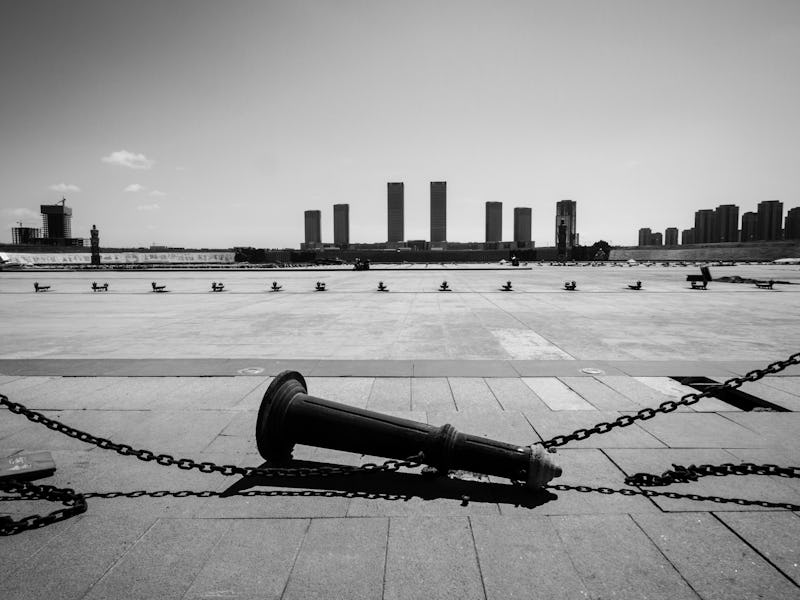Baidu's Search for Chinese Ghost Cities Yields Unexpected, Strange Results
Modern data mining dovetails with geography in surprising and mysterious ways.

China is in the midst of an unprecedented period of rapid urban growth. The country, which had been predominantly rural, now boasts new and expanded cities in many of its far-flung provinces as well four megacities (metropolises with populations of over 10 million) in its dense east. The cities are full of former farmers, many of whom watched their villages torn up in the service of an urbanization agenda. The scope of that agenda is such that more than half of the Chinese population now lives in cities. But the process has not been perfect and not all of the new cities have proven durable or desirable, which is why many sit empty.
China’s ghost cities come pre-abandoned; they were never populated in the first place. When developer state-sponsored development has gotten out of hand, supply for residential and commercial real estate has outstripped demand in certain areas. Vicious cycles being vicious cycles, empty cities sit empty.
There has already been plenty of jibber jabber about China’s ghost towns — about how the country is starting to build out into the sea; that the bloom of ghost towns are a symptom of unbalanced fiscal system for local governments; that China actually does have concrete plans of filling those cities with plenty of people as urbanization increases; that even if that’s the case, the ghost cities are currently white elephants dragging the economy down; and so forth.
There are plenty of complicated questions that need to be asked, but the simplest question may be the most compelling: How many ghost cities does China have? This doesn’t sound like it should be a hard question to answer — and, truly, it shouldn’t — but tracking places that people don’t live is hard. Lack of data is easy to overlook in the context of, well, data. The government isn’t exactly labeling these areas of empty streets and silent buildings on all its maps.
Sometimes you get lucky — Ordos (a.k.a. Kangbashi), located in Inner Mongolia and meant to house one million people, is possibly the largest ghost city ever built. It’s not all that hard to find if you know what you’re looking for. Finding others, however, requires a bit more ingenuity. Enter Baidu, China’s version of Google and an incredible resource for data scientists, when you take into account the fact that 770 million Chinese people have signed up for its services. The company took full advantage of the new tools that have made the world of data mining blossom into a powerful force for research.
For six months in 2014 and 2015, Baidu basically tracked its users’ movements throughout the day and used an algorithm to determine the location of their home. (Yes, this raises a ton of privacy concerns, but remember that this is China, there are more pressing civil liberty issues.) These locations were correlated with another set of data that encompassed known residential areas.
Then, Baidu calculated the urban density of these locations. The Chinese government says an urban region should basically be 10,000 people per one square kilometer. Baidu’s scientists decided a ghost city equates to half this density or less. An algorithm those scientists built automatically pinpoints areas that fit that criteria, while the scientists also go back to track changes in density to determine whether drops are simply due to seasonal changes, or whether they are permanent — and indicative of a ghost city.
20 potential ghost cities, mapped by the researchers.
Their results found more than 50 Chinese ghost cities. That’s an insane number — imagine 50 cities in the U.S. sprawled across the country, with all the looks and infrastructure you’d expect for a normal metropolitan area but very, very few humans. People would remark on that.
Moreover, Baidu’s scientists are acutely aware of the kind of ramifications that could result from identifying ghost cities. They only identified a handful of these cities by name, such as Ordos, and chose to map only 20.
What isn’t clear is whether the government was already aware of this, in which case it’s a transparency and malfeasance issue, or not, in which case it’s an incompetence and corruption (both probably) issue. At the very least, we know that someone is keeping tabs on ghost cities sprouting up in the most populous country in the world. But we are still left with one more question: If the government builds a city, and no one lives in it, is it really a city?